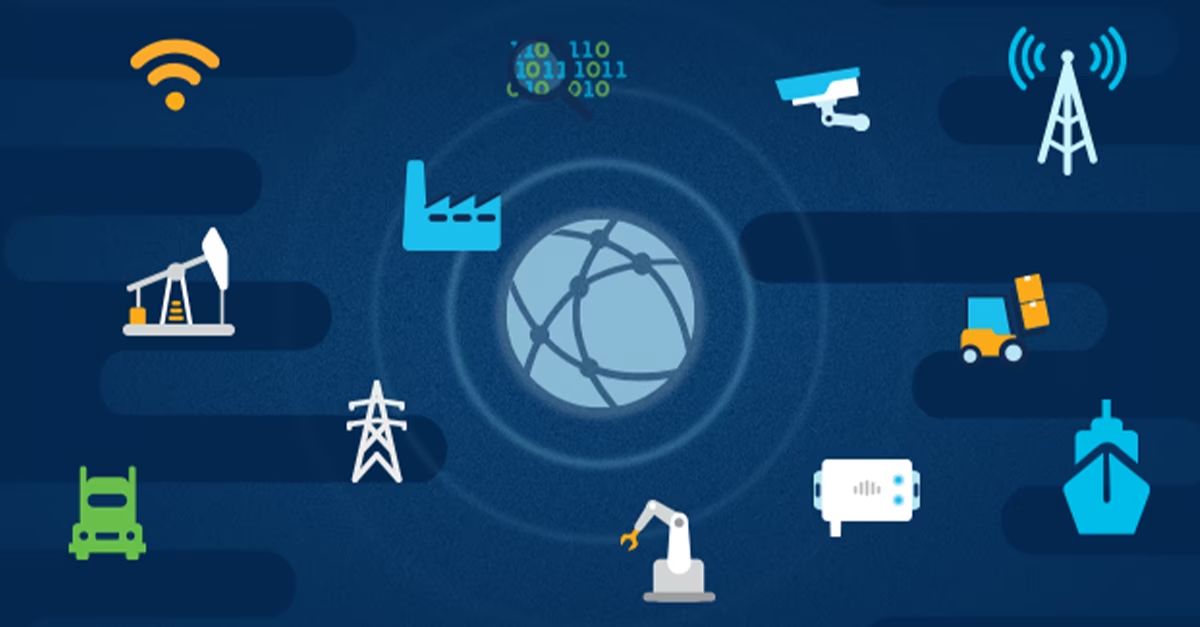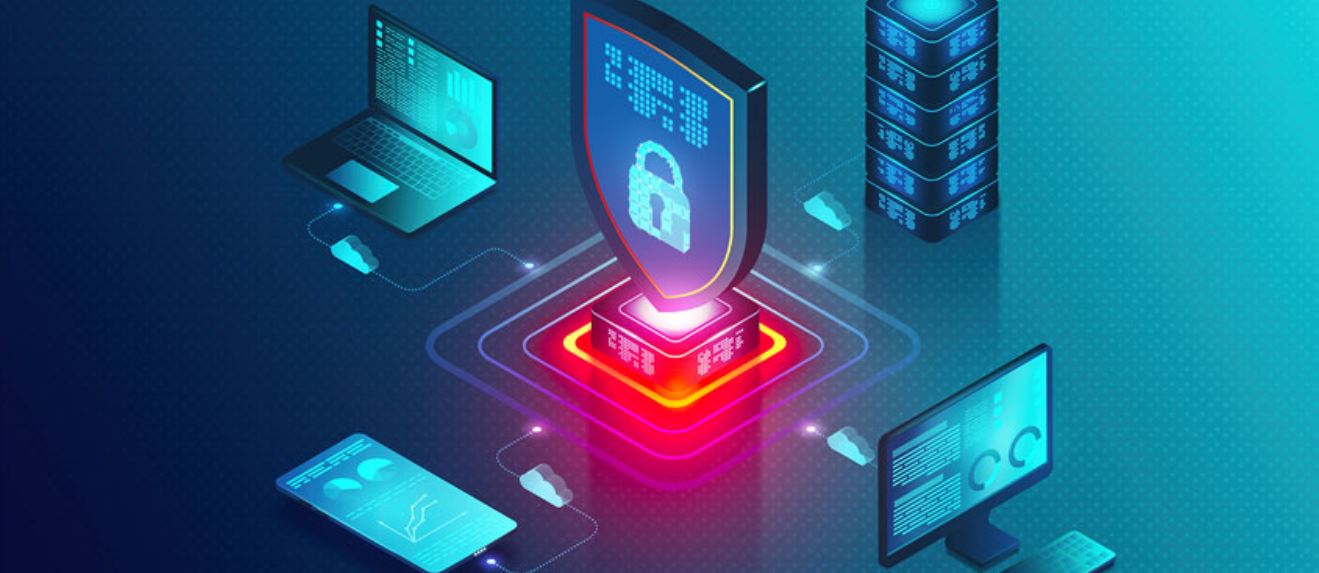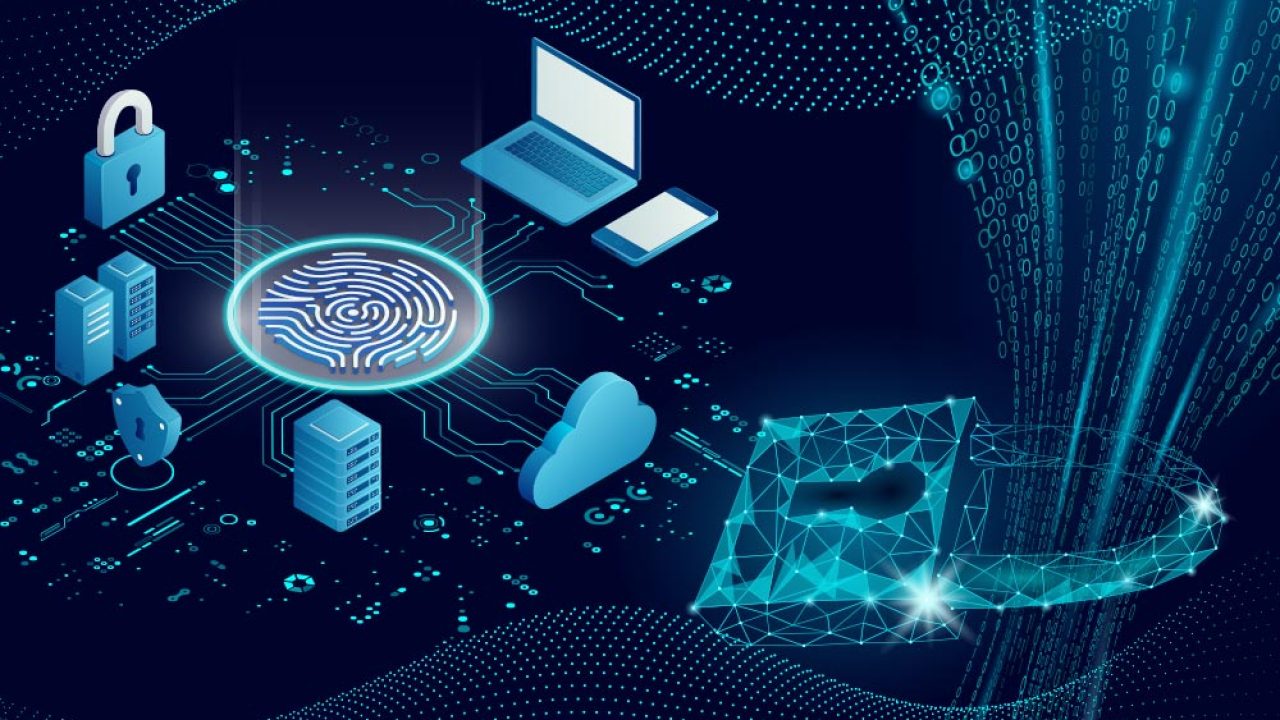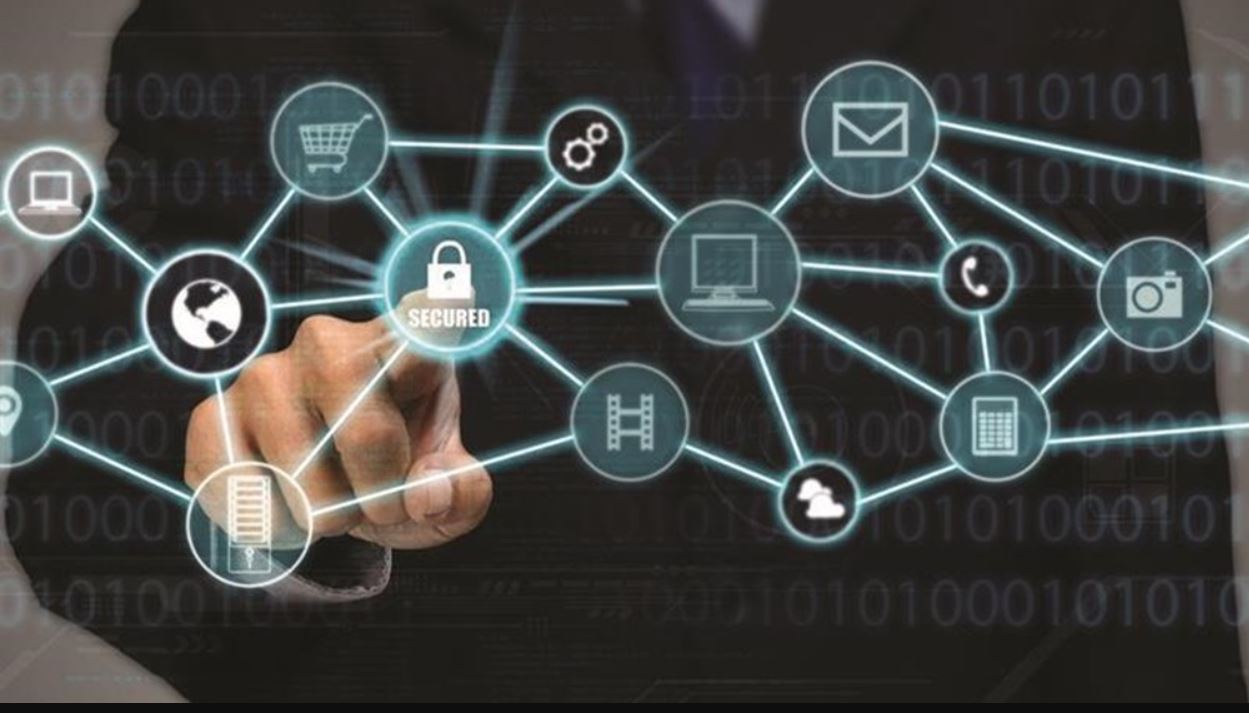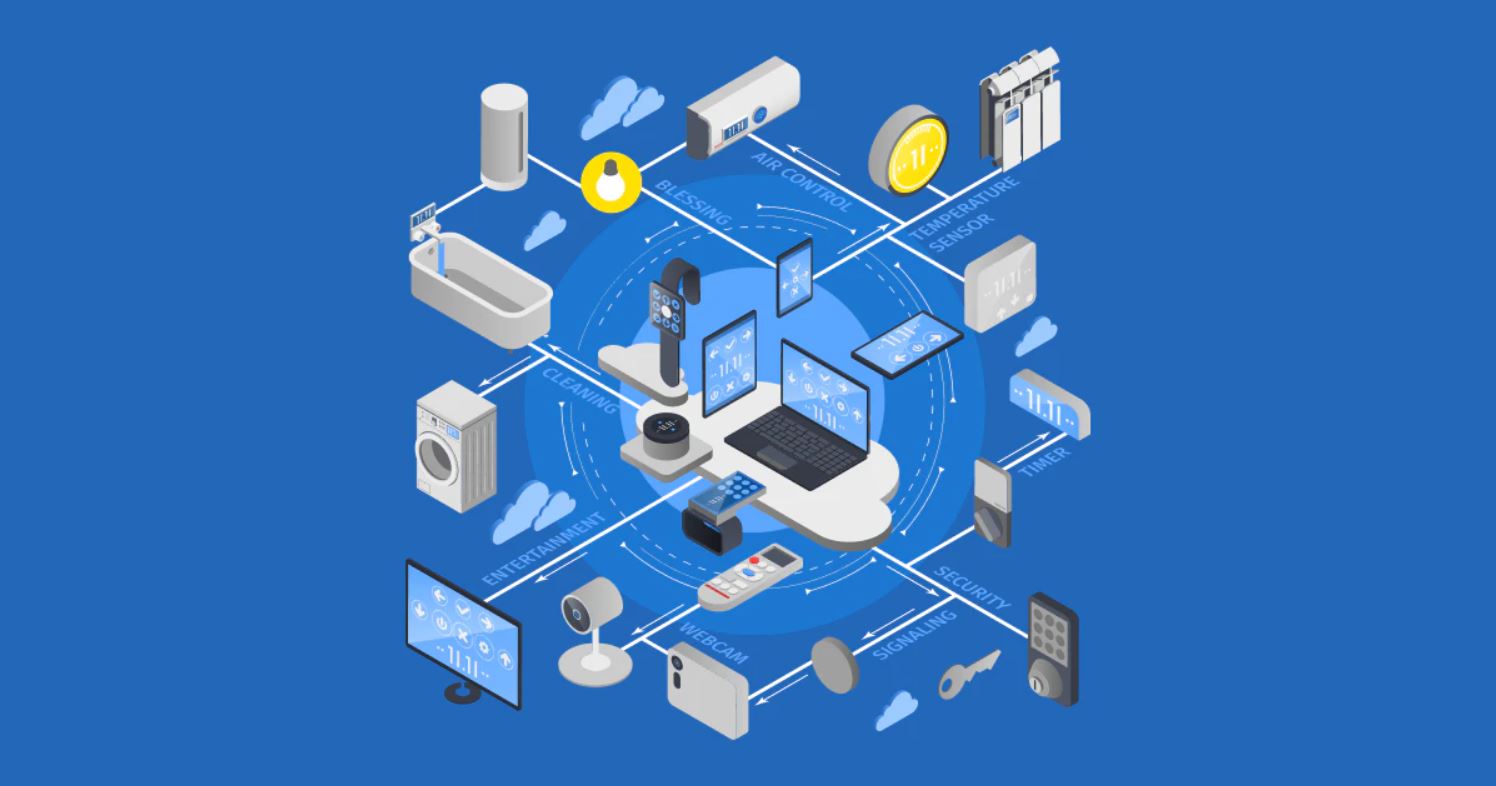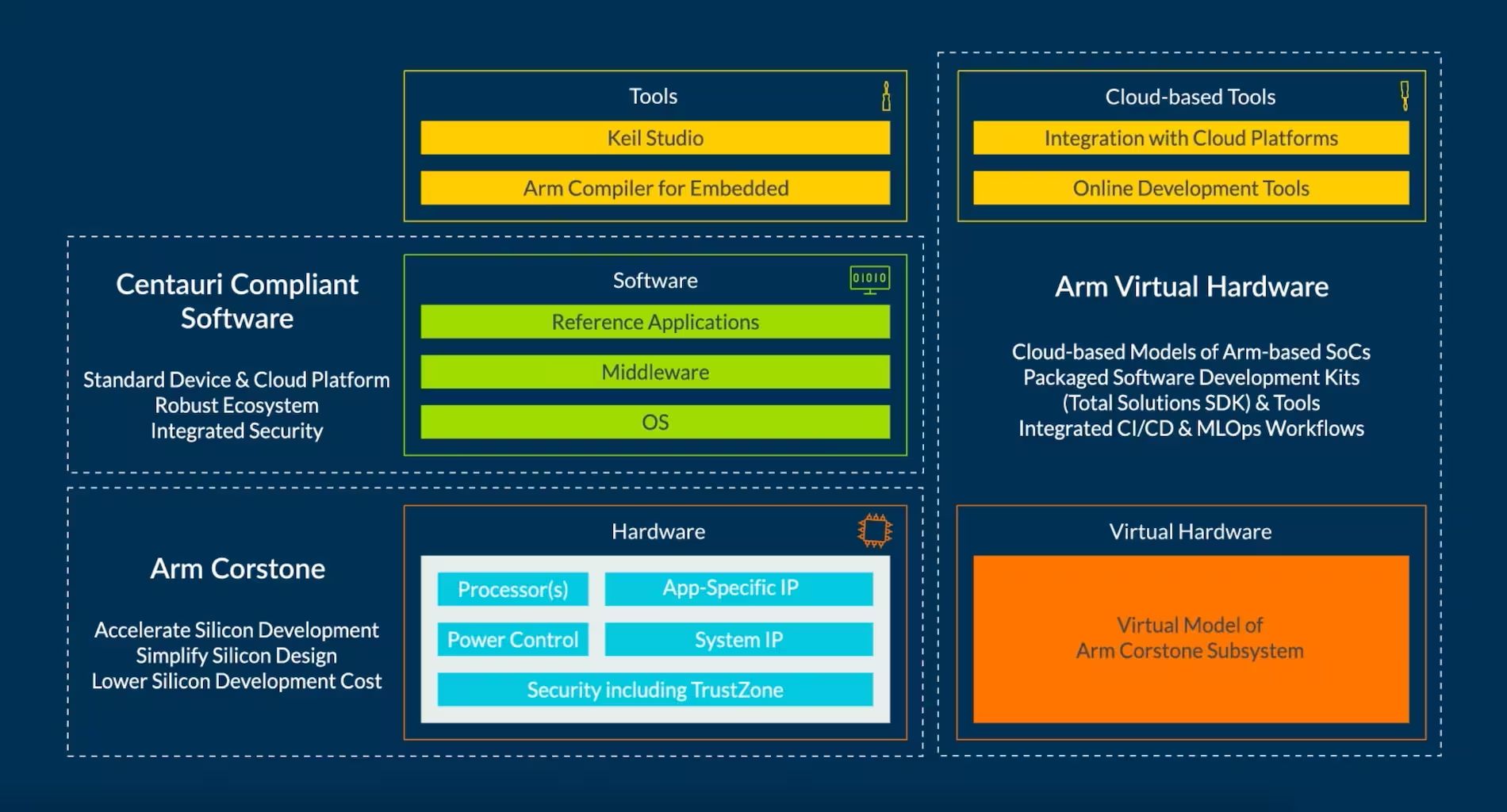Introduction
The Industrial Internet of Things (IIoT) has revolutionized the way industries function, offering numerous benefits such as increased operational efficiency, real-time data analysis, and remote monitoring. By connecting devices, machines, and systems, IIoT enables seamless communication and automation in various sectors.
However, along with the vast opportunities, the integration of IIoT also brings its fair share of risks and challenges. In this article, we will explore the potential risks associated with the Industrial Internet of Things and delve into the complexities that organizations face in ensuring the security and stability of their operational processes.
Data Security Risks:
One of the major concerns with IIoT is the security of sensitive data. The sheer volume of data being generated and transmitted across interconnected devices presents a significant challenge in securing this information from unauthorized access, data breaches, and cyber threats. Organizations must implement robust data encryption, authentication protocols, and secure data transmission mechanisms to mitigate the risk of data compromise.
Network Security Risks:
As IIoT devices communicate over networks, they are susceptible to network-based attacks such as Distributed Denial of Service (DDoS) attacks, interception, and unauthorized access. Ensuring the integrity and security of the network infrastructure and implementing multi-layered security measures, including firewalls, intrusion detection systems, and continuous monitoring, are essential in preventing network-related threats.
Device Vulnerabilities:
The interconnected devices in IIoT ecosystems may have inherent vulnerabilities that can be exploited by hackers. Weak passwords, outdated firmware, and unpatched software are entry points for unauthorized access. Regular device security auditing, firmware updates, and the implementation of strong access control mechanisms are crucial in mitigating these vulnerabilities.
Lack of Standardization:
The lack of standardized protocols and communication frameworks in the IIoT landscape poses challenges in ensuring interoperability and compatibility between different devices and systems. Without proper standardization, integrating and managing diverse IIoT components becomes complex and can lead to security and operational issues.
Data Security Risks
One of the most critical concerns surrounding the Industrial Internet of Things (IIoT) is the potential risks to data security. With the integration of numerous interconnected devices and systems, the volume of sensitive data being generated and transmitted increases exponentially. This presents significant challenges in protecting this data from unauthorized access, data breaches, and cyber threats.
There are several key data security risks that organizations must address when implementing IIoT solutions. Firstly, the sheer scale of data transmission opens up opportunities for interception and data breaches. Without proper encryption and secure transmission mechanisms, sensitive information can be compromised, leading to severe financial and reputational damage.
Furthermore, the diverse range of IIoT devices and platforms introduces complexities in managing and securing data. Integration issues, compatibility gaps, and inadequate security measures can result in vulnerabilities that cybercriminals may exploit. Weak authentication mechanisms, unpatched software, and outdated firmware can serve as entry points for unauthorized access and data manipulation.
Alongside the risk of unauthorized access, the misuse and mishandling of data also pose significant threats to its security. Internally, organizations need to establish strict data access controls and ensure that employees are trained in best security practices. Externally, they must carefully select trusted vendors and partners, taking into account their data handling protocols and measures for data protection.
Additionally, the continuous increase in the number of connected devices in IIoT ecosystems raises concerns about the vulnerability of these devices. As more devices enter the network, the risk of compromised devices acting as entry points for cyberattacks increases. Organizations must regularly audit device security, apply firmware updates, and implement stringent access control measures to prevent unauthorized access and protect against data breaches.
Addressing data security risks goes beyond implementing technical measures. It also involves creating a culture of awareness and responsibility within organizations. Employees and stakeholders need to be educated about the importance of data security, the potential risks involved, and the best practices to mitigate those risks.
By implementing robust encryption protocols, secure data transmission mechanisms, access controls, and regular audits, organizations can significantly reduce the risk of data breaches and unauthorized access in IIoT environments. Additionally, continuous monitoring and proactive threat intelligence can help detect and respond to potential security incidents in a timely manner.
Overall, it is crucial for organizations to prioritize data security and adopt comprehensive measures to safeguard sensitive information in IIoT ecosystems. By doing so, they can leverage the immense benefits of IIoT while minimizing the potential risks associated with data security.
Network Security Risks
In the realm of the Industrial Internet of Things (IIoT), network security is a paramount concern. With the interconnection of various devices and systems, the risk of network-based attacks and unauthorized access becomes a significant challenge that organizations must address.
One of the primary network security risks in IIoT environments is Distributed Denial of Service (DDoS) attacks. These attacks overwhelm the network infrastructure by flooding it with an enormous amount of traffic, rendering it unavailable to legitimate users. This disruption can lead to severe operational and financial consequences. Implementing robust DDoS mitigation techniques, such as traffic filtering and rate limiting, is essential to protect the network from such attacks.
Interception of sensitive data is another major network security risk in IIoT ecosystems. If the data transmitted between devices and systems is not properly encrypted, it becomes vulnerable to interception by malicious actors. Implementing end-to-end encryption protocols ensures that data remains secure throughout its journey across the network.
Unauthorized access to the network infrastructure is another concern. Breaching network security can grant attackers control over IIoT devices or access to critical systems. By implementing strong access controls, including secure authentication mechanisms and strict user privileges, organizations can prevent unauthorized access and protect their network infrastructure from potential security breaches.
Furthermore, the complexity of IIoT environments can lead to misconfigurations and vulnerabilities that can be exploited by cybercriminals. Implementing network segmentation and properly configuring firewalls can isolate critical components and prevent lateral movement in the event of a security breach.
Continuous network monitoring is vital in detecting and mitigating potential network security risks in IIoT environments. Intrusion Detection Systems (IDS) and Security Information and Event Management (SIEM) tools can help detect suspicious activities and generate real-time alerts, allowing for rapid response and mitigation. Regular network audits and penetration testing can also identify vulnerabilities and weaknesses in the network and provide insights to strengthen security measures.
Furthermore, organizations should stay informed about the latest network security best practices and emerging threats in the IIoT landscape. By regularly updating network security protocols and keeping up with industry standards, organizations can strengthen their network defenses and stay ahead of potential threats.
Addressing network security risks in IIoT environments requires a multi-layered approach that includes technical solutions, proper configuration, strong access controls, employee training, and ongoing monitoring. By prioritizing network security and implementing comprehensive measures, organizations can safeguard their network infrastructure and ensure a secure foundation for their IIoT operations.
Device Vulnerabilities
In the rapidly evolving landscape of the Industrial Internet of Things (IIoT), the interconnected devices play a pivotal role in facilitating seamless communication and automation. However, these devices are not without their vulnerabilities, posing significant risks to the security and stability of IIoT ecosystems.
One of the primary device vulnerabilities is weak or default passwords. Many devices are deployed with default credentials, making them an easy target for attackers. Implementing strong password policies, enforcing password changes, and encouraging the use of unique, complex passwords are crucial steps in mitigating this vulnerability.
Outdated firmware and software present another significant device vulnerability. Manufacturers often release updates to address security flaws and improve device performance. However, if devices are not regularly updated, they become susceptible to exploitation. Organizations must establish processes to ensure prompt firmware and software updates to address known vulnerabilities and protect against potential threats.
Lack of proper access controls is also a critical vulnerability in IIoT devices. If devices do not have secure access mechanisms in place, unauthorized individuals can gain control over them. Implementing strong authentication methods, such as two-factor authentication, and limiting access permissions to authorized personnel can help mitigate this risk.
As devices in IIoT environments often operate in harsh and remote locations, physical security is an additional vulnerability. Unauthorized physical access to devices can lead to tampering or theft of critical components, compromising the integrity of the entire system. Ensuring physical security measures such as video surveillance, secure enclosures, and limited access to device locations is essential in protecting against physical vulnerabilities.
Moreover, the sheer diversity and complexity of IIoT device ecosystems can introduce integration vulnerabilities. Devices from different manufacturers may not seamlessly integrate, leading to security gaps and potential points of exploitation. Manufacturers and organizations must prioritize interoperability and adhere to standardized protocols to minimize these integration vulnerabilities.
Conducting regular device security audits is crucial in identifying and addressing vulnerabilities. Vulnerability scanning tools and penetration testing can help expose weaknesses that may be exploited by malicious actors. Additionally, organizations must foster a culture of security awareness among employees and personnel who interact with IIoT devices, ensuring that they understand the importance of proper security practices.
By continuously monitoring device vulnerabilities, promptly addressing software and firmware updates, implementing secure access controls, and prioritizing physical security, organizations can significantly reduce the risks associated with device vulnerabilities in IIoT environments.
Lack of Standardization
The lack of standardized protocols and communication frameworks is a significant challenge in the Industrial Internet of Things (IIoT) landscape. The absence of uniform standards and guidelines poses risks and obstacles for organizations aiming to implement and manage IIoT solutions across different devices, systems, and platforms.
One of the primary issues caused by the lack of standardization is interoperability challenges. With a multitude of disparate devices and technologies, ensuring seamless communication and integration becomes complex. Lack of compatibility can lead to data incompatibility, communication failures, and increased vulnerability to security breaches.
Furthermore, the absence of standardized security protocols makes it challenging to implement consistent and robust security measures across all IIoT devices and systems. Security measures that work on one platform may not be compatible or effective on another. This inconsistency opens up vulnerabilities, making it easier for attackers to exploit weaknesses.
The lack of standardized protocols also affects scalability. As organizations aim to expand their IIoT deployments and integrate additional devices, the absence of interoperable standards hampers the scalability of the entire system. Each new device or system may require custom integration efforts, resulting in increased complexity, time, and cost.
Standardization is also crucial in preventing vendor lock-in. Without standardized protocols, organizations may become dependent on specific vendors or platforms, limiting their flexibility and hindering their ability to adopt new technologies or switch providers. Standardization promotes competition, innovation, and freedom of choice in deploying and managing IIoT solutions.
Addressing the lack of standardization requires industry-wide collaboration and the establishment of common frameworks and protocols. Organizations, manufacturers, and regulatory bodies should work together to define and adopt widely accepted standards, ensuring interoperability, security, and scalability across IIoT ecosystems.
Adherence to industry standards and best practices can help mitigate the risks associated with the lack of standardization. Organizations should prioritize using devices and systems that comply with recognized standards and certification programs. This ensures that the implemented solutions adhere to the highest levels of quality, security, and compatibility.
Industry consortia and standardization bodies play a crucial role in driving the development and adoption of standards for IIoT. Organizations should actively participate in these initiatives to influence the standardization process and contribute to the creation of robust and widely accepted guidelines.
By embracing standardization efforts and implementing solutions that adhere to recognized standards, organizations can overcome interoperability challenges, enhance security measures, minimize scalability issues, and foster a more open and collaborative IIoT ecosystem.
Privacy Concerns
The rise of the Industrial Internet of Things (IIoT) brings about significant benefits in terms of efficiency and automation. However, it also raises valid concerns regarding data privacy. The interconnected nature of IIoT devices and the vast amounts of data collected and shared can potentially compromise individuals’ privacy. Organizations must navigate these concerns ethically and responsibly to foster trust and ensure compliance with privacy regulations.
One of the primary privacy concerns in IIoT environments is the gathering and sharing of personal information. As devices monitor and collect data, including location, behavioral patterns, and personal preferences, there is a risk of the unauthorized use or exposure of this data. Organizations must implement robust privacy policies and obtain explicit consent from individuals whose data is being collected. Transparent communication and clear consent mechanisms help ensure that individuals understand how their data is being used and that their privacy rights are respected.
Data anonymization and aggregation techniques play a crucial role in addressing privacy concerns. By removing personally identifiable information and only sharing aggregated and anonymized data, privacy risks can be significantly mitigated. This allows organizations to leverage the benefits of analytical insights while preserving the anonymity of individuals.
Another privacy concern arises from the potential for data sharing with third parties. Organizations should carefully manage data sharing agreements and ensure that data is only disclosed to trusted partners who have implemented appropriate security measures. Contracts and agreements should outline the purpose and scope of data sharing to maintain privacy and protect against unauthorized access or misuse.
As data is transmitted across networks, encryption becomes imperative in preserving privacy. Implementing secure encryption protocols ensures that data remains confidential, even if intercepted. Strong encryption algorithms and secure transmission mechanisms, such as Virtual Private Networks (VPNs), play a vital role in safeguarding data privacy during transmission.
Ensuring data storage security is essential in preserving privacy. Organizations should implement robust access controls, data encryption, and secure storage systems to prevent unauthorized access to stored data. Regular audits and vulnerability assessments should be conducted to identify and address any potential security weaknesses.
Compliance with privacy regulations, such as the General Data Protection Regulation (GDPR) and relevant industry-specific regulations, is crucial in safeguarding privacy in IIoT environments. Organizations must understand and adhere to the requirements outlined in these regulations, including obtaining consent, providing data subject rights, and implementing necessary security measures.
Best practices in privacy by design and privacy impact assessments should be followed during the development and deployment of IIoT systems. By considering privacy aspects from the early stages, privacy risks can be identified and addressed proactively. This approach emphasizes the importance of privacy throughout the lifecycle of IIoT deployments.
Open communication with customers and users regarding privacy practices, data handling procedures, and any potential privacy risks can help build trust. By being transparent and accountable, organizations can demonstrate their commitment to protecting individuals’ privacy within the IIoT ecosystem.
Addressing privacy concerns in the Industrial Internet of Things requires a proactive and holistic approach. By implementing privacy policies, anonymization techniques, secure encryption protocols, and compliance with relevant regulations, organizations can protect individuals’ privacy and foster trust in IIoT systems.
Regulatory Compliance
With the widespread adoption of the Industrial Internet of Things (IIoT), organizations face the challenge of ensuring compliance with an array of regulatory requirements. Various industries have regulations that dictate the collection, storage, and usage of data, as well as the overall security and privacy considerations in IIoT deployments. Adhering to these regulations is crucial in mitigating risks, avoiding legal consequences, and maintaining customer trust.
One of the key regulatory compliance aspects in IIoT is data protection. Regulations like the General Data Protection Regulation (GDPR) in the European Union and similar data protection laws in other regions specify the rights of individuals regarding their personal data. Organizations must obtain lawful consent for collecting and processing personal data, provide transparent data handling practices, and implement appropriate security measures to protect that data from unauthorized access or disclosure.
Additionally, industry-specific regulations, such as those in the healthcare or financial sectors, may impose specific requirements on IIoT deployments. For example, the Health Insurance Portability and Accountability Act (HIPAA) in the United States sets strict guidelines for protecting patient health information. Organizations in these industries must ensure compliance with such regulations by implementing proper access controls, encryption, and auditing mechanisms to safeguard sensitive information.
Security standards and certifications are crucial for ensuring regulatory compliance in IIoT. Compliance with ISO 27001, the international standard for information security management systems, and other relevant security certifications demonstrates that organizations have implemented and maintained appropriate security controls. Additionally, adhering to the Payment Card Industry Data Security Standard (PCI DSS) is essential for organizations that handle credit card information.
Regulations also emphasize the importance of risk assessments and vulnerability management in IIoT environments. Organizations should conduct regular risk assessments to identify potential threats and vulnerabilities, and develop effective mitigation strategies. Ongoing vulnerability management, including patch management and security updates, is crucial in maintaining compliance with regulations.
Furthermore, regulations often mandate incident response and breach notification procedures. Organizations should develop and document incident response plans, which include processes for addressing security incidents, analyzing breaches, and notifying affected individuals or authorities. The ability to promptly detect, respond to, and report security incidents is pivotal in maintaining regulatory compliance.
Compliance with regulations requires regular audits and assessments to validate adherence to requirements. Organizations should conduct internal audits or engage third-party auditors to evaluate their compliance efforts. These audits help identify compliance gaps and provide recommendations for improvements.
Lastly, regulatory compliance is an ongoing process that requires organizations to stay up to date with evolving regulations and industry standards. Keeping abreast of changes in the legal landscape allows organizations to adapt their IIoT deployments and ensure continued compliance.
By adhering to regulatory requirements, organizations can demonstrate their commitment to protecting data, ensuring security, and mitigating risks in the IIoT ecosystem. Compliance not only safeguards against legal consequences but also builds customer trust and enhances the reputation of organizations in an increasingly interconnected world.
Physical Security Risks
While much attention is focused on the cybersecurity aspects of the Industrial Internet of Things (IIoT), it is crucial not to overlook the physical security risks associated with the deployment and operation of IIoT systems. Physical security vulnerabilities can expose critical components to theft, tampering, or unauthorized access, compromising the integrity and functionality of the entire system.
One significant physical security risk is unauthorized physical access to IIoT devices and infrastructure. If malicious individuals gain physical access to these devices, they can tamper with them or potentially extract sensitive information. Implementing access controls, such as secure enclosures, restricted entry points, and video surveillance, is essential in preventing unauthorized physical access.
Physical theft of devices is another concern. IIoT devices, particularly those deployed in remote or unattended locations, may be targeted for their intrinsic value or the data they contain. Organizations should employ measures such as asset tracking, anti-theft devices, and secure installation to deter theft and locate stolen devices quickly.
Environmental hazards pose a significant physical security risk to IIoT systems. Exposure to extreme temperatures, humidity, vibrations, or other adverse conditions can impair the functionality and reliability of the devices. Proper environmental controls, including temperature monitoring, protective enclosures, and adequate insulation, are necessary to safeguard the devices from these hazards and ensure their optimal performance.
Physical security risks can also arise from insider threats. Unauthorized personnel with access to IIoT devices may exploit their physical proximity to commit malicious activities. Organizations should implement strict access control measures, employee awareness programs, and regular security training to mitigate the risk of insider threats.
Additionally, the supply chain itself can present physical security risks. Tampering or unauthorized modifications during the manufacturing, transportation, or installation process can compromise the integrity and security of IIoT devices. Rigorous supplier vetting, secure transport mechanisms, and verification procedures are critical in ensuring the integrity of the supply chain and minimizing these risks.
A comprehensive physical security plan should consider the entire lifecycle of IIoT devices and infrastructure. This includes secure device installation, ongoing monitoring and assessments, regular maintenance, and proper disposal procedures. Maintaining a secure physical environment contributes to the overall resilience and reliability of IIoT systems.
Collaboration between IT and physical security teams is vital to address physical security risks effectively. By combining their expertise, organizations can implement comprehensive security measures that encompass both the digital and physical aspects of IIoT deployments.
Regular physical security audits and vulnerability assessments are necessary to identify and address potential physical security weaknesses. These assessments should evaluate aspects such as access controls, video surveillance coverage, environmental controls, and the overall physical security posture of the IIoT infrastructure.
By recognizing and addressing physical security risks, organizations can ensure the continuity and reliability of IIoT operations. A well-rounded security approach that encompasses both digital and physical aspects is essential in safeguarding the integrity, functionality, and confidentiality of IIoT systems.
Data Integrity Risks
Data integrity is a critical aspect of the Industrial Internet of Things (IIoT), ensuring that data remains accurate, consistent, and reliable throughout its lifecycle. However, various risks can threaten data integrity, potentially leading to erroneous insights, faulty decision-making, and compromised system functionality.
One of the primary data integrity risks in IIoT environments is data corruption during transmission. The transmission of data across networks leaves it susceptible to errors, interference, or malicious tampering. Ensuring the integrity of transmitted data requires reliable protocols, such as error-checking mechanisms, data verification algorithms, and secure transmission protocols like Secure Sockets Layer (SSL) or Transport Layer Security (TLS).
Software bugs and glitches can also compromise data integrity. Faulty code or programming errors can lead to data inconsistencies, inaccuracies, or even system crashes. Implementing rigorous software development practices, including thorough testing and quality assurance processes, is crucial in minimizing the risk of data integrity issues arising from software vulnerabilities.
Data storage and retention pose additional risks to data integrity. Malfunctioning storage devices, hardware failures, or malicious attacks can result in data loss or corruption. Regular backups, redundant storage infrastructure, and data integrity verification mechanisms, such as checksums or digital signatures, are vital in safeguarding data integrity during storage and retrieval processes.
Human errors can also pose data integrity risks. Mistakenly entering incorrect data or manipulating data without proper authorization can have far-reaching consequences on the accuracy and reliability of the data. Implementing strict access controls, data validation processes, and user training programs can mitigate the risk of human-induced data integrity incidents.
Additionally, maintaining the integrity of data generated by sensors and devices is crucial. Faulty sensors, calibration issues, or physical wear and tear can result in inaccurate or inconsistent data outputs. Regular maintenance and calibration of sensors, together with data validation techniques and sensor health monitoring, help ensure the integrity of data collected from IIoT devices.
Security breaches can also lead to data integrity risks. When unauthorized individuals gain access to IIoT systems or manipulate data, the integrity of the data can be compromised. Implementing robust security measures, including strong access controls, encryption, and intrusion detection systems, helps prevent unauthorized access and protect data integrity.
Regular monitoring and auditing of data integrity are essential. Organizations should implement mechanisms to detect, correct, and prevent data integrity issues. This includes data validation checks, data reconciliation processes, and monitoring for suspicious or abnormal data patterns that may indicate potential integrity breaches.
Data integrity is critical in maintaining the trust and reliability of IIoT systems. By implementing robust data transmission and storage protocols, quality software development practices, strict access controls, sensor validation mechanisms, and regular monitoring processes, organizations can protect against data integrity risks and ensure the accuracy and dependability of their IIoT data.
Scalability Challenges
The Industrial Internet of Things (IIoT) offers immense potential for organizations to improve operational efficiency and drive innovation. However, as IIoT deployments expand and the number of connected devices increases, scalability challenges emerge. Ensuring that systems can handle the growing demands without compromising performance or functionality becomes a significant concern for organizations.
One of the primary scalability challenges in IIoT is the increasing volume of data generated by connected devices. As the number of devices grows, the exponential increase in data can overwhelm existing infrastructure, leading to bottlenecks and decreased system performance. Organizations need to invest in scalable data storage and processing solutions that can handle the ever-expanding data demands.
Another scalability challenge is integrating diverse devices, platforms, and technologies. IIoT ecosystems often consist of heterogeneous devices from different manufacturers, each with its own communication protocols and interfaces. Ensuring seamless integration and communication between these devices can be complex and time-consuming. The adoption of standardized protocols and frameworks, as well as leveraging API-driven approaches, can facilitate interoperability and scalability.
System complexity also poses challenges to scalability. As additional devices and systems are integrated into IIoT networks, the management and maintenance complexity increases exponentially. Organizations must employ robust device management platforms and centralized control mechanisms to efficiently scale the deployment while ensuring effective monitoring, maintenance, and troubleshooting processes.
An important consideration for scalability in IIoT is the availability and reliability of network infrastructure. With a larger number of devices connecting to networks, networks can become congested, leading to latency issues and decreased system responsiveness. Organizations should regularly assess their network bandwidth, upgrade network infrastructure when necessary, and employ load balancing techniques to ensure smooth scalability.
Scalability challenges also encompass the ability to handle real-time analytics and insights. As data is collected and analyzed in real-time, the computational and processing requirements of IIoT systems increase. Implementing scalable edge computing solutions and distributed processing architectures can help meet the demands of real-time data analysis without overwhelming central systems.
Additionally, the human factor poses a scalability challenge. Training and equipping staff to handle the increasing complexity and scale of IIoT deployments is crucial. Organizations should invest in employee training programs, upskill existing IT teams, and consider partnering with external experts to ensure that the necessary skill sets are in place to support scalable IIoT environments.
Addressing scalability challenges requires a holistic approach involving infrastructure planning, integration strategies, automation, and continual monitoring and optimization. Regular assessments of system capacity and performance, together with proactive scaling strategies, such as horizontal scaling or cloud-based solutions, enable organizations to adapt to the growing demands of IIoT deployments.
By effectively addressing scalability challenges, organizations can ensure that their IIoT systems can handle increasing data volumes, integrate diverse devices and platforms, and support real-time analytics. Scalability not only ensures the continuous performance and functionality of IIoT systems but also paves the way for future growth and innovation.
Interoperability Issues
Interoperability, or the ability of different devices, systems, and platforms to communicate and work together seamlessly, is a critical concern in the Industrial Internet of Things (IIoT) landscape. The lack of interoperability introduces challenges for organizations seeking to integrate diverse technologies, extract maximum value from their IIoT investments, and leverage the full potential of interconnected ecosystems.
One of the main interoperability issues stems from the use of different communication protocols and standards across devices and systems. Each manufacturer may adopt proprietary protocols, making it difficult to achieve interoperability between devices from different vendors. Efforts to promote standardized protocols and communication frameworks, such as MQTT or OPC UA, can facilitate interoperability and streamline integration processes.
Moreover, differences in data formats and structures can hinder interoperability. Data captured by various IIoT devices may be stored in different formats or adhere to different conventions. Organizations must invest in data transformation and normalization techniques to ensure seamless data integration and enable data-driven insights across disparate devices and systems.
Another interoperability challenge arises from different security mechanisms implemented by various devices and systems. Ensuring secure and authenticated communication between devices becomes complex when devices have incompatible security protocols or authentication methods. Adhering to standardized security frameworks, implementing encryption mechanisms, and establishing secure channels for communication can help overcome these challenges.
Furthermore, varying power requirements and energy efficiency standards can impact interoperability. IIoT devices may have different power sources, battery capacities, or energy consumption levels. Harmonizing power solutions or accessing diverse power options, such as wireless charging or energy harvesting, can enhance interoperability and enable efficient deployment of IIoT devices across the ecosystem.
Interoperability challenges extend beyond devices to include compatibility with existing legacy systems. Organizations may have established systems, such as Enterprise Resource Planning (ERP) or Manufacturing Execution Systems (MES), that need to interface with IIoT solutions. Ensuring seamless integration requires the development of well-defined interfaces and the adoption of standardized protocols that enable interoperability with legacy systems.
Addressing interoperability issues requires industry collaboration, standardized protocols, and open architecture approaches. Organizations and manufacturers need to work together to establish common protocols, interfaces, and frameworks that enable seamless communication and data exchange. Embracing open standards and leveraging technologies like Application Programming Interfaces (APIs) or middleware can facilitate integration between systems and promote interoperability.
Proper testing, validation, and certification processes are essential in achieving interoperability. Manufacturers and organizations should engage in interoperability testing to ensure that devices and systems meet compatibility requirements and work harmoniously within the IIoT ecosystem.
Ultimately, interoperability enables organizations to maximize the value of their IIoT investments, create flexible and scalable systems, and unlock new opportunities for innovation. By addressing interoperability challenges through standardized protocols, open architectures, and rigorous testing processes, organizations can create interconnected IIoT environments that seamlessly integrate diverse devices and systems.
Integration Complexity
The integration of various devices, systems, and platforms in the Industrial Internet of Things (IIoT) landscape introduces a significant level of complexity. The diverse nature of technologies, protocols, and interfaces involved can pose challenges for organizations seeking to achieve seamless integration within their IIoT ecosystems.
One of the primary factors contributing to integration complexity is the heterogeneity of devices and systems deployed in IIoT environments. Devices may come from different manufacturers, utilize different communication protocols, and have varying data formats and structures. This disparity makes integration a complex endeavor, requiring extensive customization and mapping of data and functionalities between different components.
Legacy systems further complicate the integration process. Existing systems, such as Manufacturing Execution Systems (MES) or Enterprise Resource Planning (ERP) systems, may employ outdated technologies or proprietary protocols that are not inherently compatible with IIoT technologies. Bridging the gap between legacy systems and new IIoT deployments requires careful planning and implementation of compatible interfaces.
In addition, the sheer scale and distributed nature of IIoT deployments contribute to integration complexity. IIoT ecosystems often consist of a large number of devices spread across different locations, generating extensive amounts of data. Efficiently aggregating, processing, and analyzing this data in a centralized manner requires thoughtful infrastructure design, network connectivity, and data management strategies.
Timing and synchronization issues also arise in IIoT integration. Different devices may operate at different speeds or time intervals, making it challenging to synchronize their actions and ensure accurate data collection and coordination. Implementing synchronized clocks, timestamping data, and utilizing time synchronization protocols can help address these challenges and achieve better integration of time-sensitive processes.
The integration of IIoT data with enterprise systems poses another layer of complexity. Connecting IIoT data streams with business applications, such as Customer Relationship Management (CRM) or Supply Chain Management (SCM) systems, requires robust integration mechanisms and synchronization of data flows. Maintaining data consistency, accuracy, and timeliness across the IIoT and enterprise systems is crucial for reliable and impactful decision-making.
Addressing integration complexity requires a systematic approach. Organizations need to develop well-defined integration strategies, assess compatibility between devices and systems, and define data mapping and transformation processes. Utilizing middleware or Integration Platform as a Service (iPaaS) solutions can simplify integration processes and provide a standardized framework for managing connections and data flows.
Collaboration between IT teams, operations teams, and vendors plays a critical role in managing integration complexity. Establishing clear communication channels, conducting regular meetings, and aligning goals and responsibilities ensure a cohesive approach to integration. Regular testing and validation of integrations are necessary to identify and rectify issues early on and ensure the smooth operation of the integrated IIoT ecosystem.
By addressing integration complexity through careful planning, compatible interfaces, standardized protocols, and effective collaboration, organizations can streamline the integration process, achieve seamless connectivity, and unlock the full potential of their IIoT deployments.
Lack of Skillset
The rapid growth and adoption of the Industrial Internet of Things (IIoT) have created a demand for a specific skillset to effectively design, deploy, and manage IIoT systems. However, organizations often face a shortage of professionals with the necessary expertise, leading to a significant lack of skillset in the industry.
One of the main areas in which organizations struggle to find qualified personnel is in the realm of IIoT architecture and design. Designing an effective IIoT system requires an understanding of hardware, software, networking, and data management principles. Professionals need to possess the ability to determine the optimal device configurations, select appropriate communication protocols, design data processing pipelines, and ensure scalability and interoperability. The scarcity of individuals with this level of expertise often results in architectural challenges and inefficient system designs.
Another skillset in high demand is IIoT data analytics. With the massive amount of data generated by interconnected devices, organizations require professionals who can extract meaningful insights and make data-driven decisions. Data analysts skilled in statistical analysis, machine learning, and data visualization are necessary to derive valuable knowledge from IIoT data streams. However, finding individuals with the appropriate data analytics skillset, as well as an understanding of the specific challenges and considerations in IIoT data analysis, can be challenging.
Cybersecurity expertise is also vital for IIoT deployments but is in short supply. IIoT systems expose organizations to various security risks, necessitating professionals who can implement robust security measures, conduct vulnerability assessments, and respond to security incidents effectively. This lack of cybersecurity skillset leaves organizations vulnerable to attacks and can undermine trust in IIoT systems.
Furthermore, the lack of expertise in operational technology (OT) and information technology (IT) convergence poses a challenge for organizations. IIoT requires the integration of traditional OT systems with modern IT infrastructure, resulting in a need for professionals who can bridge the gap between these domains. Such individuals must understand legacy systems, industrial protocols, and working principles of OT while also having expertise in network architecture, cloud computing, and cybersecurity.
Addressing the lack of skillset in the industry requires proactive measures. Organizations can invest in training and upskilling programs to enhance the expertise of existing employees and prepare them for IIoT-related roles. Collaborating with educational institutions and industry associations can help develop specialized IIoT programs and certifications to fill the skillset gap and create a pipeline of skilled professionals.
Partnerships with external vendors, consultants, or managed service providers that specialize in IIoT can offer access to the necessary expertise and support. Outsourcing certain aspects of IIoT implementation or maintenance can alleviate the burden of skillset gaps while ensuring the smooth operation of IIoT systems by leveraging the experience and knowledge of external experts.
Lastly, promoting collaboration and knowledge sharing within the organization and across the industry is beneficial. Encouraging cross-functional teams, fostering a culture of continuous learning, and participating in industry conferences and forums can help organizations stay updated with the latest advancements and overcome the barriers posed by the lack of skillset.
Addressing the lack of skillset is crucial for organizations to fully leverage the benefits of IIoT systems. By investing in training, partnerships, and knowledge sharing, organizations can equip themselves with the necessary expertise to design, deploy, and manage IIoT systems effectively.
Financial Implications
The adoption of the Industrial Internet of Things (IIoT) can lead to significant financial implications for organizations. While IIoT offers numerous benefits, such as improved operational efficiency and cost savings, there are also several financial considerations that organizations must navigate.
One of the main financial implications of implementing IIoT is the initial investment required. Building and deploying an IIoT infrastructure involves costs associated with hardware procurement, software development, network infrastructure, and data management systems. Organizations must carefully assess their budget and consider the return on investment (ROI) in terms of productivity gains, cost reductions, and revenue growth when making this initial investment.
Operating costs also play a role in the financial aspect of IIoT. Connected devices generate significant amounts of data, resulting in increased storage and data management costs. Additionally, the implementation of robust security measures, regular maintenance, and software updates incur ongoing operational expenses. Organizations must budget for these costs to ensure continued operation and security of their IIoT systems.
Despite the costs associated with IIoT implementation, organizations can benefit from long-term cost savings. IIoT enables predictive maintenance, real-time monitoring, and improved asset utilization, leading to decreased downtime, reduced maintenance costs, and extended equipment lifespan. Organizations can optimize resource allocation and improve operational efficiency, resulting in long-term cost savings and improved profitability.
Furthermore, IIoT opens up opportunities for new revenue streams. By leveraging the data collected through interconnected devices, organizations can develop data-based services or insights that can be monetized. For example, by offering predictive maintenance services or selling analytics reports to customers, organizations can generate additional revenue beyond their primary products or services.
Risk management is another financial consideration in IIoT. While IIoT brings numerous benefits, it also introduces new risks, such as data breaches or system downtime. Organizations must allocate resources and budget for risk mitigation strategies, including cybersecurity measures, disaster recovery plans, and insurance coverage to manage potential financial impacts from these risks.
Scalability is an additional financial consideration. As organizations expand their IIoT deployments, the costs associated with scaling the infrastructure, adding new devices, and ensuring interoperability increase. Organizations should carefully budget for scalability needs and plan for additional investments as their IIoT ecosystem grows.
Market dynamics and competition also impact the financial implications of IIoT. Organizations need to assess the potential return on investment in relation to market demand and competitive landscapes. It’s important to consider factors such as customer willingness to pay, market trends, and potential disruptions that could affect the financial viability of IIoT ventures.
Finally, the financial implications of IIoT extend to regulatory compliance. Organizations must allocate resources to ensure adherence to data protection and privacy regulations, which may involve investment in compliance measures, audits, and employee training.
Organizations must carefully evaluate the financial implications of IIoT before embarking on implementation. By understanding the costs, return on investment, revenue opportunities, risk management, scalability needs, market dynamics, and regulatory compliance, organizations can make informed decisions that maximize the financial benefits while effectively managing the associated costs.
Conclusion
The Industrial Internet of Things (IIoT) offers immense potential for organizations to enhance operational efficiency, drive innovation, and make data-driven decisions. However, it also poses various risks and challenges that must be addressed to ensure successful implementation and operation.
Data security risks are a primary concern in IIoT environments. Organizations must prioritize data encryption, secure transmission mechanisms, and access controls to protect sensitive information from unauthorized access and cyber threats.
Network security risks must also be addressed to prevent network-based attacks and interception. Implementing firewalls, intrusion detection systems, and continuous network monitoring can help safeguard against unauthorized access and data breaches.
Device vulnerabilities, such as weak passwords and outdated firmware, can act as entry points for cyberattacks. Regular device security audits, firmware updates, and strong access controls are essential in mitigating these vulnerabilities.
The lack of standardized protocols and communication frameworks poses challenges in achieving interoperability in IIoT ecosystems. Organizations should strive to adopt standardized protocols to ensure seamless integration and compatibility between devices and systems.
Privacy concerns must be addressed to protect individuals’ personal information. Transparent data handling practices, data anonymization techniques, and compliance with privacy regulations help preserve privacy rights and foster trust.
Regulatory compliance is crucial for organizations to adhere to data protection, security, and privacy regulations. Following industry standards, conducting regular audits, and implementing secure processes are essential for maintaining compliance.
Physical security risks, including unauthorized access and theft, require measures such as secure enclosures, access controls, and video surveillance to prevent tampering or data compromise.
Data integrity risks must be managed to ensure the accuracy, consistency, and reliability of data. Implementing secure data transmission, data validation mechanisms, and robust backup strategies help preserve data integrity.
Scalability challenges, integration complexity, and the lack of skillset are financial considerations that organizations must navigate to ensure effective IIoT implementation and operation.
In conclusion, while the Industrial Internet of Things brings significant opportunities, organizations must address the associated risks and challenges. By implementing robust security measures, adhering to industry standards and regulatory compliance, fostering interoperability, and developing the necessary skillset, organizations can leverage the benefits of IIoT while ensuring the integrity, security, and resilience of their systems. Proactive planning, ongoing monitoring, and collaboration across the organization and industry will be key in maximizing the potential of the IIoT and driving innovation in the industrial landscape.







